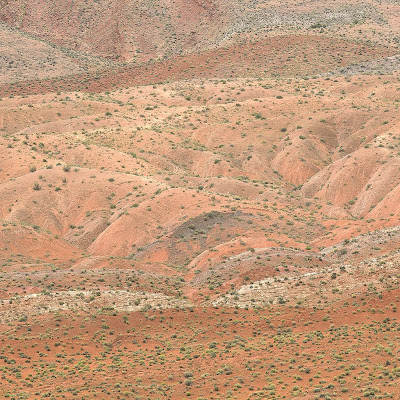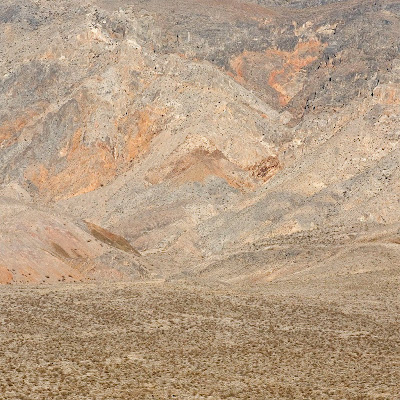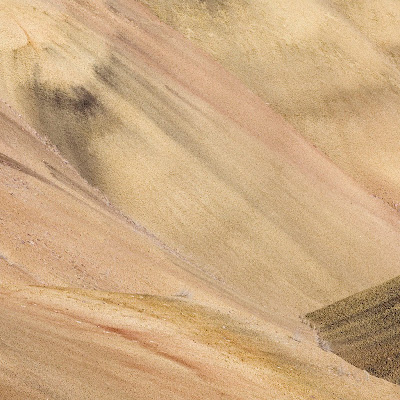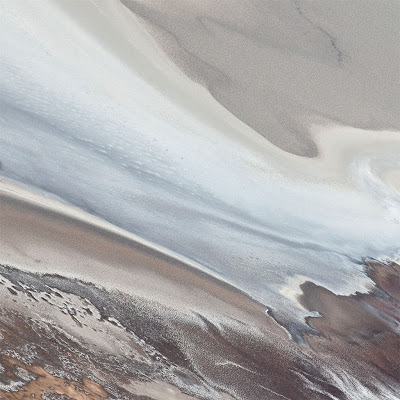Stephen Strom
Photographer and astronomer, Stephen Strom, looks at our planet with a unique vision. New York born, Stephen received his Masters and Ph.D. in Astronomy from Harvard University, and had an long and prestigious career beginning as Lecturer in Astronomy at Harvard and Astrophysicist at the Smithsonian Astrophysical Observatory, and continuing on as Chairman of the Five College Astronomy Department at University of Massachusetts in Amherst, MA. In 1998 Stephen moved to Tucson as a member of the scientific staff at the National Optical Astronomy Observatory where he carried out research directed at understanding the formation of stars and planetary systems.
For over three decades, Stephen has been an engaged photographer, has exhibited widely, and created a monograph Earth Forms through Dewi Lewis Publishing. His work is currently included in the January, 2011 issue of Color Magazine, and a large portfolio and an interview can be found in Lenswork 89 and Lenswork Extended.
The images from his Earth Forms Project provide a wonderful way to look at nature’s paint box. His new series, Earth and Space, is a portfolio of diptychs that combine Stephen’s landscape interpretations with images taken by NASA and ESA planetary probes. Be sure to click on the images to see them larger.
I have spent most of my professional life as an astronomer, searching out patterns encoded in the light from distant stars in the hope of understanding how our sun and solar system came to be. Over the past four decades, I have spent countless hours perched on remote mountaintops, looking upward mostly, but also contemplating the desert below. During those times, I became drawn to, then seduced by the changing patterns of desert lands sculpted by the glancing light of the rising and setting sun: light that reveals forms molded both by millennial forces and yesterday’s cloudburst into undulations of shapes and colors. In response, I began what has become a 30-year long devotion to capturing in images those remarkable patterns and the rich history they encode.
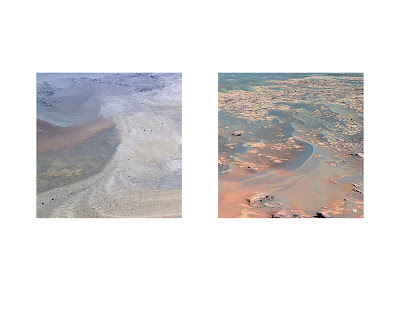
Left: Haleakala Crater, Maui, HI; Right: Meridiani Planum near Beagle Crater, Mars (image from the Opportunity rover)
These earth-based images find resonance in the remarkable photographs produced by planetary probes launched over the past decades by NASA and its European counterpart, ESA. Tens of thousands of these images are available in digital form in public domain archives, which, as an experiment, I decided to examine from the perspective of an artist rather than an
astronomer. In doing so, I tried to imagine myself standing on the surface of Mars, or on a high Martian mountain and searching for patterns which evoke the same powerful emotional response as a desert landscape.
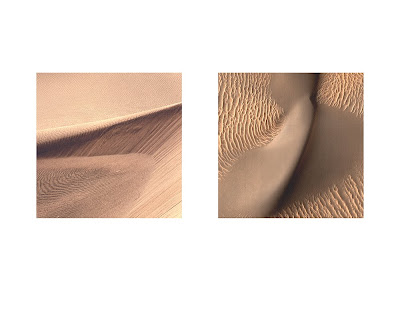
Left: Dune detail, Cadiz Dunes, CA; Right: Proctor Crater Dunes, Mars (image from Mars Reconnaissance Orbiter)
Hence these diptychs: combinations of landscapes and Mars-scapes that capture patterns that reveal both sculptural and chromatic rhythms, and, on another level, commonality of physical forces, often acting on vastly different spatial and temporal scales.
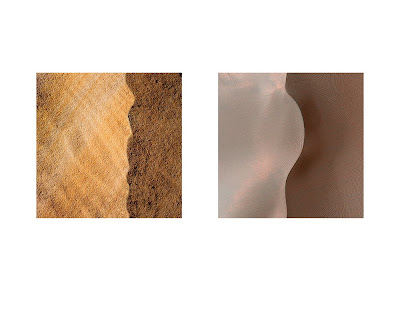
Left: Sandstone pattern, Canyon de Chelly, AZ; Left: Dunes and Volatiles, Mars (image from Mars Reconnaissance Orbiter)
The pairings invite the viewer to contemplate the power of photograph and viewpoint to reveal the multi-level beauty of two worlds. What I hope to evoke is what the late essayist Ellen Meloy described as a “geography of infinite cycles, of stolid pulses of emergence and subsidence, which, in terms geologic and human, is the story of the earth [and Mars] itself.”

Left: Sand Dune detail, White Sands NM, NM; Right: Transverse Dunes, Vastitas Borealis, Mars (image from Mars Reconnaissance Orbiter)
Left: Sand Dune detail, White Sands NM, NM; Right: Dune field, Proctor Crater, Mars (image from Mars Reconnaissance Orbiter)
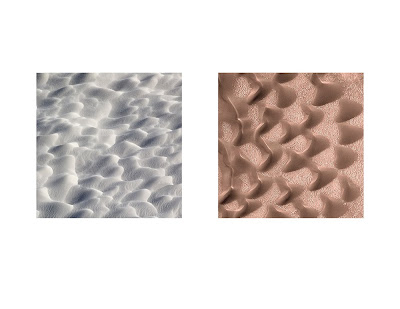
Left: Ocean and Sand, near Yachats, OR; Right: Dune Field, Abalos Unae, Mars (image from Mars Reconnaissance Orbiter)

Left: Sand pattern, near Yachats, OR; Right: Right: Gullies near Sirenum Fossae Crater, Mars (image from Mars Reconnaissance Orbiter)

Left: Windblown sand, near Yachats, OR; Right: South Pole Cryptic Terrian, Mars (image from Mars Reconnaissance Orbiter)
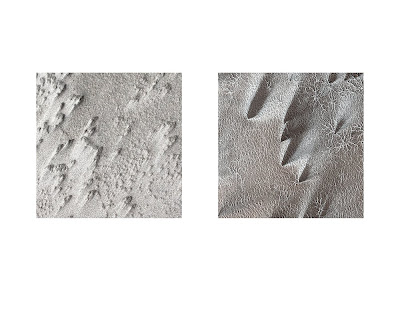
Left: Sand pattern, near Yachats, OR: Right: Dust Devil Patterns, Martian Surface (image from Mars Reconnaissance Orbiter)
Left: Mud pattern, near Yachats, OR; Right: Scalloped Sand Dunes, southern hemisphere, Mars (image from Mars Reconnaissance Orbiter)
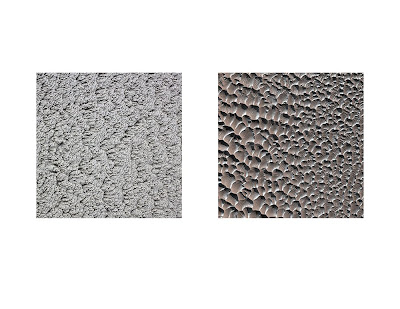
Left: Eroded volcanic rock, Death Valley NP, CA; Right: Flows and Land Forms near Icaria Planum (image from Mars Reconnaissance Orbiter)

Left: Eroded volcanic rock, Yachats, OR; Right: Ridges and Pits, Deuteronilus Mensae, Mars (image from Mars Reconnaissance Orbiter)
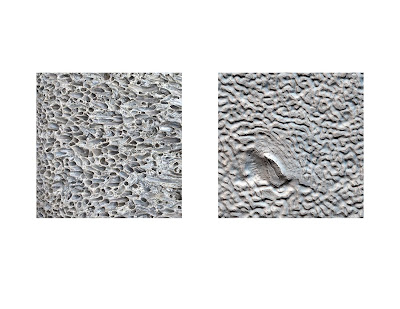
Left: Ice and mud, Canyon de Chelly, AZ; Right: South Polar Spiders and CO2 Ice, Mars (image from Mars Reconnaissance Orbiter)
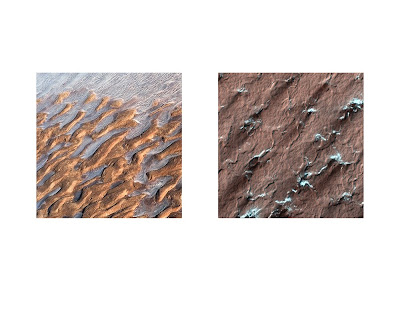
Left: Crater wall, Ubehebe Crater, Death Valley, CA; Right: Eroded Gullies, Mars (image from Mars Reconnaissance Orbiter)
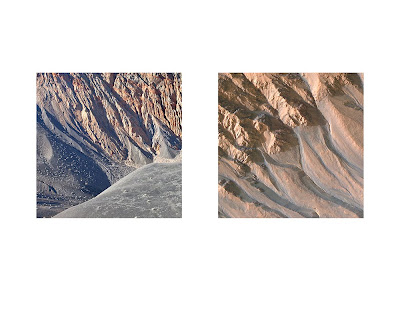
Left: Eroded rock, Johns Island, WA; Right: Mounds in Ancient Crater, Mars (image from Mars Reconnaissance Orbiter)
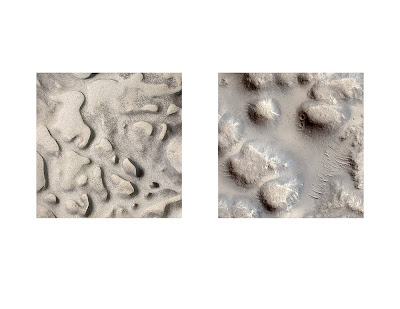
Posts on Lenscratch may not be reproduced without the permission of the Lenscratch staff and the photographer.
Recommended
-
The Female Gaze: Suzanne Révy – With Reverence for LightApril 10th, 2025
-
Photography Educator: Mary Virginia SwansonJanuary 10th, 2025
-
Interview with Dylan Hausthor: What the Rain Might BringDecember 23rd, 2024


